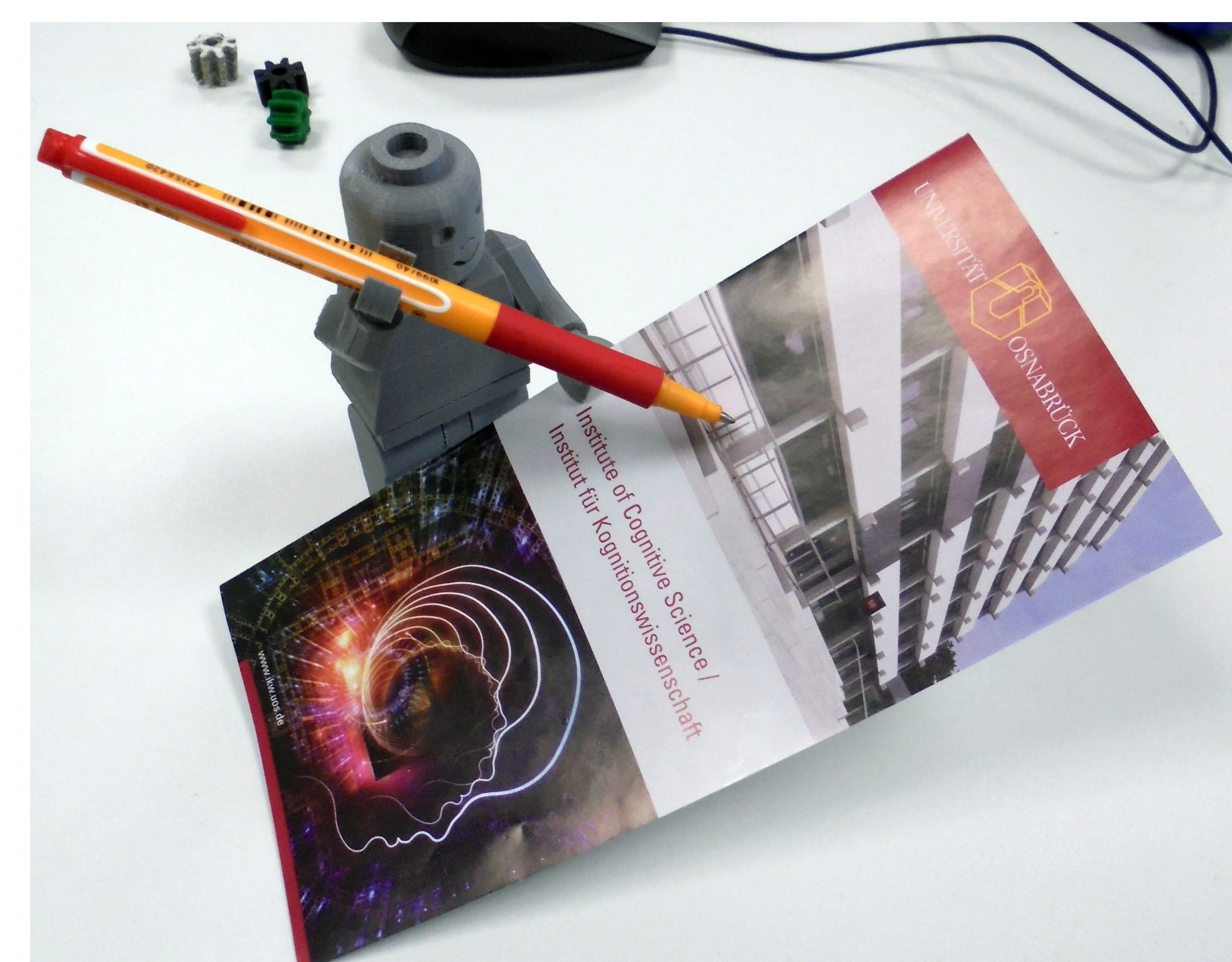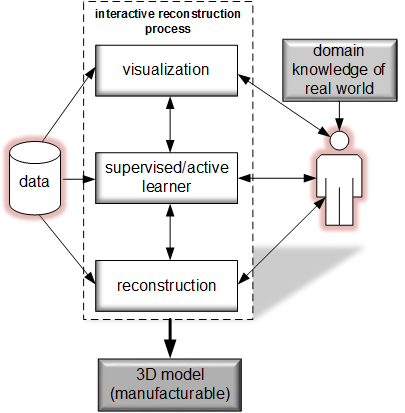Main content
Top content

Interactive 3D Modelling

- to achieved accurate, reliable, non-monolithic, functioning and CAD-ready models
- in cooperation with an non-expert user
- from video footage
- in a few simple user interactions, only.
 The the main drive of this project is the multitude of computer vision based techniques, that reconstruct and model 3D objects or scenes from photographs or video footage captured in 2D (monocular) or 3D (stereo). Many of these techniques and approaches reconstruct objects or scenes with automatic algorithms from image sequences. But would an architect or an engineer call the resulting 3D reconstruction a CAD-model? Is a non-expert user able to apply these tools? Can the user apply the method without special hardware like a rotating plate, laser, stereo camera or even a main frame computer? Are users able to reconstruct models of real world objects in such a way that they will be able to translate them back to real world replicas? The answer to these questions is mostly – No – but why?
The the main drive of this project is the multitude of computer vision based techniques, that reconstruct and model 3D objects or scenes from photographs or video footage captured in 2D (monocular) or 3D (stereo). Many of these techniques and approaches reconstruct objects or scenes with automatic algorithms from image sequences. But would an architect or an engineer call the resulting 3D reconstruction a CAD-model? Is a non-expert user able to apply these tools? Can the user apply the method without special hardware like a rotating plate, laser, stereo camera or even a main frame computer? Are users able to reconstruct models of real world objects in such a way that they will be able to translate them back to real world replicas? The answer to these questions is mostly – No – but why?
Therefore, this project reviews automatic and interactive 3D reconstruction and modeling techniques, compare them and and analyze their weaknesses. Under these perspectives, it should be discussed how an interactive computer vision application could be employed to overcome existing weaknesses. Finally, an application should be developed for the interactive creation of non-monolithic, functioning 3D models — models that architects or engineers would call a model, and CAD-ready models that can be applied for simulation tasks, reverse engineering, replication and many more purposes.
Project Pages
Osnabrück — Synthetic Scalable Cube Dataset - SCIA'17
Multimedia Container Formats for Instantaneous Data Visualizations - JEMR, ETVIS'16, WACV'17, VISAPP'17
Interactive feature growing - EPIC@ECCV'16
iSeg - semi-automatic ground truth annotation tool - K-CAP'15; ICPRAM'16
Bio-Inspired Architecture for Deriving 3D Models from Video Sequences - ACCV'16; ICIAP'17
Evaluation of multi-view 3D reconstruction software - CAIP'15

